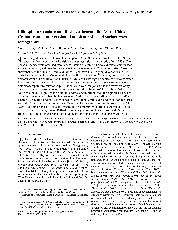摘要
We imaged detailed 3-D crustal and uppermost mantle seismic structures in the North China Craton from inversion of Rayleigh wave phase velocity at periods of 6 to 143s. The phase velocities were obtained from a combination of ambient noise and teleseismic surface wave tomography, and then the phase velocities were inverted to S-wave velocities. The results show that both the Huabei Basin and Ordos Block have markedly rapid variations in both crustal velocities and the Moho depth. Huabei Basin has a thin (31-34km) crust with low velocities while Ordos Block has a thick (similar to 40km) crust with high velocities. We also estimated the lithospheric thickness from the inverted S-wave velocities using a simple S-wave velocity/temperature relationship. Huabei Basin was imaged as a low S-wave-velocity anomaly in the uppermost mantle with very thin lithosphere (similar to 65km), while Ordos Block was revealed as a high S-wave-velocity anomaly with rather thick lithosphere (>120km). These results indicated that Huabei Basin and Ordos Block have different thermal and/or chemical properties and had experienced different mantle processes and evolution histories since the Cenozoic. Furthermore, slow S-wave velocities and very thin lithosphere (similar to 65km) were also found beneath Hetao and Weihe rifts bounding Ordos Block at north and south, respectively. However, Shanxi Riftthe boundary between Huabei Basin and Ordos Blockhad a much thicker and higher velocity lithosphere than Hetao and Weihe rifts.
- 出版日期2013-5
- 单位北京大学; 中国地震局
